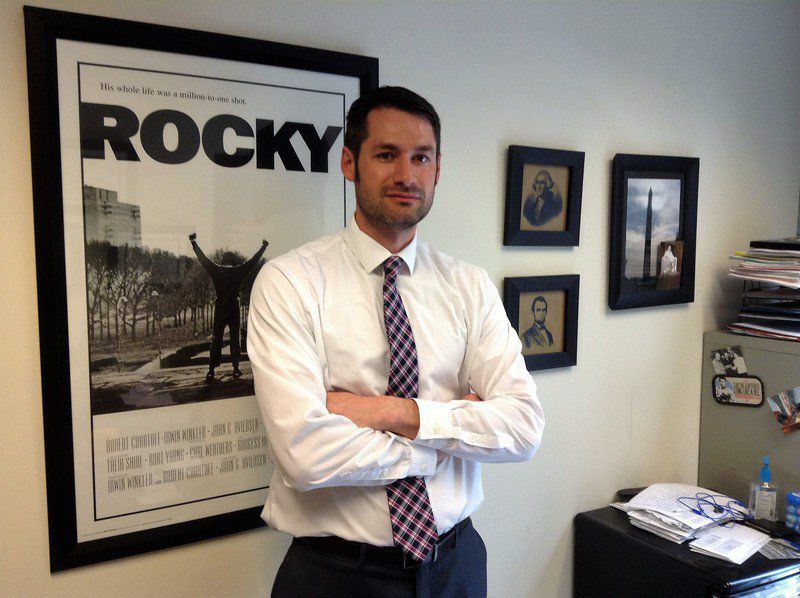Mark Bennett: Will candidates need Indiana in 2020?
-
It's good to feel needed. Presidential candidates — at least a few of them — needed Hoosiers in 2008 and 2016.
America's election system gave Indiana a rare meaningful role in those presidential primaries. In '08, Sens. Barack Obama and Hillary Clinton were locked in a tight race for the Democratic Party nomination when Indiana conducted its primary. Both candidates campaigned heavily in the state, including two stops each in Terre Haute. Clinton narrowly defeated Obama in the primary, but lost the party's nomination to the future president.
Eight years later, Hoosier voters gave billionaire reality TV star Donald Trump enough delegates to clinch the Republican nomination, ousting Texas Sen. Ted Cruz and Ohio Gov. John Kasich from a once crowded field of candidates. Trump conducted a campaign rally inside the Indiana Theatre, and Cruz spoke at Woodrow Wilson Middle School in advance of the Indiana primary.
Indiana's primary was unusually important in 2008 and 2016. The state's relatively late primary date — the first Tuesday after the first Monday in May — normally makes Indiana an afterthought. The parties' front-runners have all but sewn up the nominations by then.
The state also typically gets little attention from the nominees as they campaign for the fall general election. Its red-state history prompts both parties to assume the Republican nominee will win Indiana's 11 electoral votes, so neither party spends much time or resources on Hoosier soil. Since 1964, the only Democratic presidential candidate to win Indiana was Obama in 2008.
There's a chance Indiana might matter again in 2020. Nearly 20 major candidates are seeking the Democratic nomination and the chance to challenge Trump, who won the presidency over Hillary Clinton in 2016 through the Electoral College. Even though 40 other states will have already conducted their primaries or caucuses before Indiana, that bursting-at-the-seams field may still be unsettled by May 5, 2020.
"I think [Democrats] may have incentives to campaign here during the nominating process because of the large number of candidates and the possibility that no one will have the nomination locked up early in the process," said Andy Downs, director of the Mike Downs Center for Indiana Politics at Purdue University Fort Wayne.
Even after the primaries boil the field down to Trump and a Democratic challenger, Indiana might remain on their campaign schedules, despite the state's traditional lean toward Republicans.
"If the Democratic nominee has any sort of campaign structure in place in Indiana after the primary, they can think about doing some campaigning here, not because they think they can win, but because doing so will pull Republican resources from other states," Downs speculated last week.
But what if Indiana conducted its primary on the same day as its fellow Midwestern states? What if that Midwest Super Tuesday occurred in January, before the traditional lead-off states — Iowa, New Hampshire and South Carolina? And, what if the nation overhauled its antiquated primary system so that each region — the Northeast, South, Midwest, Mountain West and West — staged same-day state primaries, one region after another, rotating the order of who goes first, second, third, fourth and fifth from one election to the next?
That change is one of several proposed by Matthew Bergbower in his new book, "A Profile of the American Electorate: Partisan Behavior and the Need for Reform." A system of rotating regional primaries would equalize — over time — the weight of votes cast in Indiana, New Hampshire and other states, said Bergbower, an associate professor of political science at Indiana State University.
His list of reforms doesn't stop there.
Bergbower favors eliminating the Electoral College. Americans actually vote for Electoral College delegates, who later cast ballots for the presidential candidate who won their respective states. The number of Electoral College delegates in each state is determined by each state's number of congressional districts. That indirect system gave Trump the presidency over Clinton, despite her receiving nearly 3 million more popular votes. George W. Bush prevailed through the Electoral College in the 2000 election, despite Al Gore's edge in the popular vote.
Such a reform, Bergbower said, isn't about one party — the Democrats — losing in 2000 and 2016 via the Electoral College. The same fate could await a Republican candidate in the future. Besides, both Bush and Trump insisted they could've won the popular vote if that had been their campaign strategy. Still, the perception that dismantling the Electoral College is a Democratic idea makes that change less likely.
"It may not gain enough traction until a Republican wins the popular vote but loses the Electoral College," Bergbower said Wednesday afternoon.
Some other reforms Bergbower recommends have varying chances of becoming realities. He suggests letting candidates see the questions before the presidential debates; imposing financial penalties for recklessly false statements in political ads; reinstating the Fairness Doctrine to give candidates and opposing opinions equal time on broadcasts; limiting super-political action parties; adopting automatic voter registration and same-day registration; and investing more funds for civics education.
A more engaged American electorate and fairer elections would be the result, Bergbower said.
Changing the primary system to give each region of America an equal say in picking a president might be a good place to start. In the meantime, Indiana will must wait until next spring to see whether candidates for the nation's highest office need to hear Hoosier voices.
